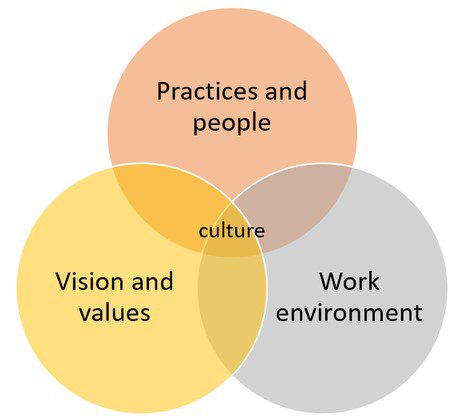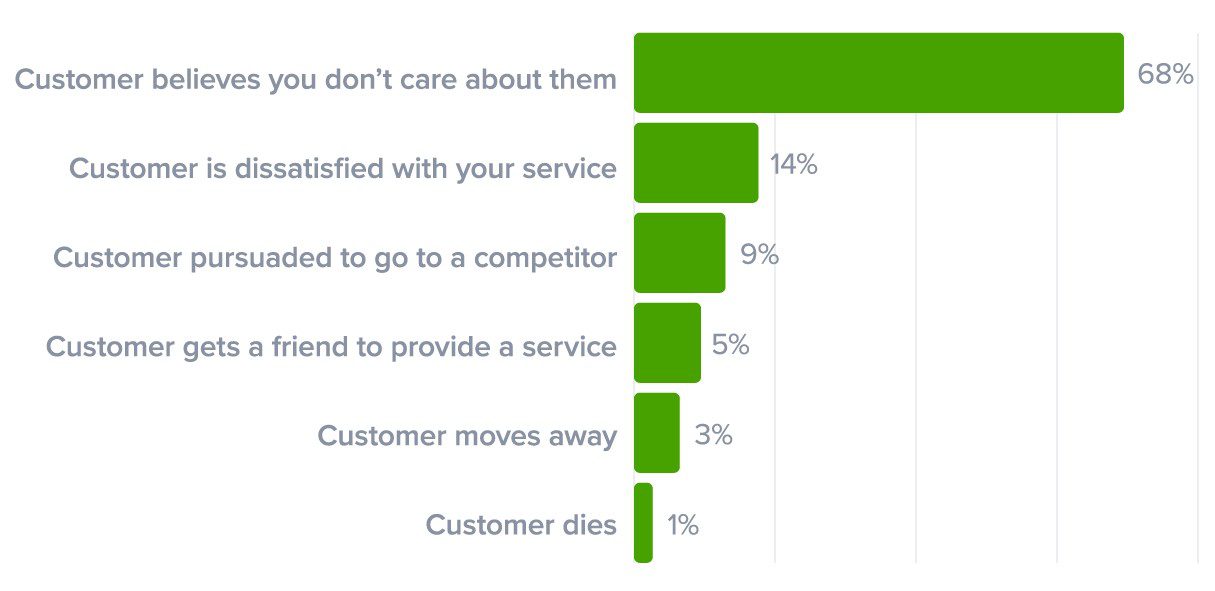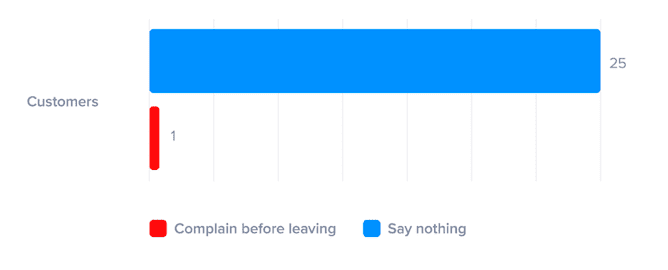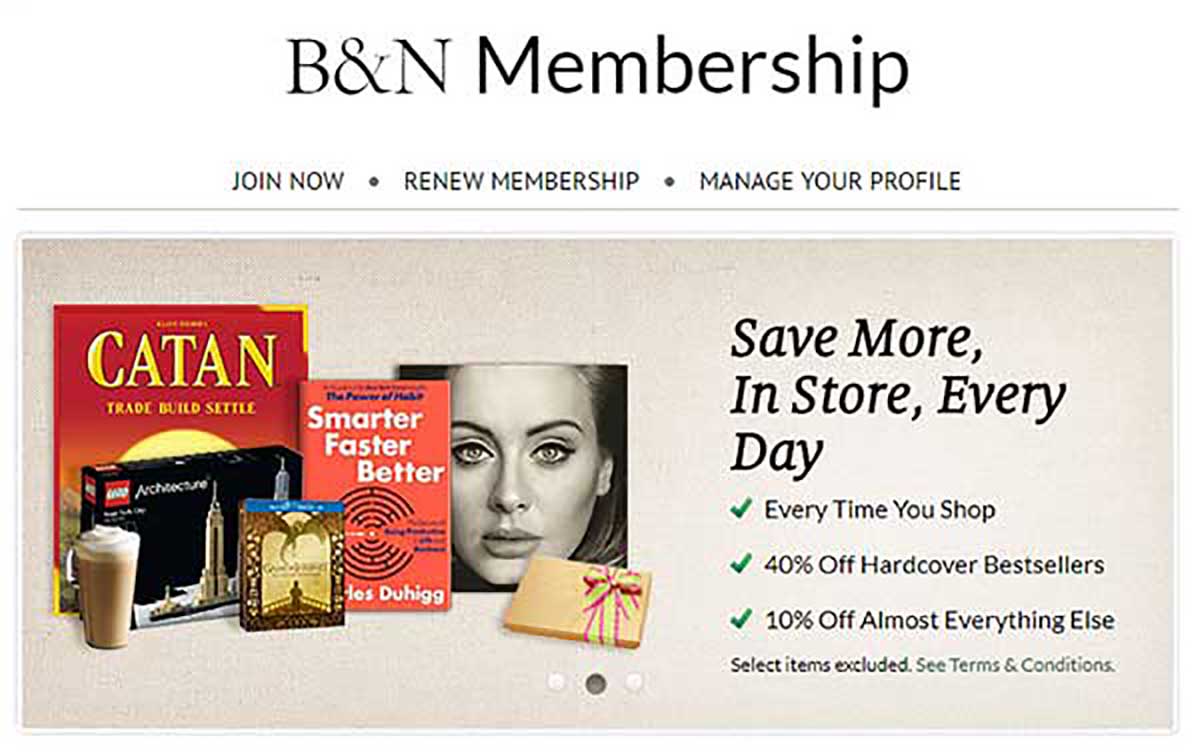Table of Contents
Did you realize that a fulfilled client spends, in any event, multiple times more cash on your product/service than a “to some degree” glad one? Perhaps this year, rather than sending automated birthday messages, follow these 11 research-upheld and reasonable advances.
If you don’t care about customer’s satisfaction, don’t anticipate them to worry about your services or products. Sad, but true. The earlier you face it, the higher you’ll perform.
Measurement is the first step that leads to control and, eventually, to improvement. If you can’t measure something, you can’t understand it. If you can’t understand it, you can’t control it. If you can’t control it, you can’t improve it.
― H. James Harrington
Customer satisfaction is a measure of how well a company’s product and service meets, or exceeds, customer expectations.
1) Customers value “GOOD” service more than “FAST” service 👌
Recent studies display that customers who get hold of competent, knowledgeable, and all-encompassing services are much more likely to bear in mind their experience and tell their companions.

Moreover, clients cited “impolite, incompetent and rushed” carrier as their #1 motivation to abandon a brand/provider, 18% more frequently than “slow” service.
Customers are affected by even a solitary encounter; one positive experience could be the main factor for them to adhere to a brand, though one negative one could send them rushing to a contender.
2) Figure Out What the Customer Really Wants 🙇♂️
Figure out what the customer really wants, by applying a very simple 4-step approach to each customer

- Identify the problem
- Verify that the customer cannot solve the problem independently
- Demonstrate competence
- Solve the problem
If you can solve the problem, they may pay. The cost is often no longer in the bargain you provide, or value brought offerings you supply, however alternatively in the solution, you may ensure. Here’s a real case study to follow.
3) Stay up-to-date on where to engage 📱
Connecting with your customers in social media is no longer optional – they expect you to be there. Social networks are constantly shifting based on user interaction, so you’ll want to stay current on where to invest your efforts.
In a world that is heavily dependent on the internet, consumers are quick to hop online and share how they feel about a product or service. Take the time to log onto the internet and observe what people are saying about your business.
Find out what humans enjoy, as well as what they’d like to see improved. The critiques you stumble throughout might wonder you and introduce you to regions of improvement which you had no longer previously considered.
Let’s look at few main concepts you can follow
- Ask for Your Audience’s Opinions
Gathering information about the preferences and opinions of your customers has never been easier. Social media users love to share their opinions online, and your fans will often be more than willing to share their thoughts about your products.
All you need to do is give them something to share their opinion about. One of the simplest ways to go about this is by creating a poll, or even just posting a question with your content.
- Listen to feedback, show Your Customers Appreciation
Collecting feedback is crucial to a successful business, it’s almost pointless if you don’t actually use that feedback in a meaningful way
You should handle the complaints in a professional manner and integrate any useful suggestions into your business strategy. This should be done on a regular basis because when your customers can see that you are listening to them they will be more forthcoming with vital feedback in the future.
Letting your customers know they are appreciated can help keep them happy, as well as give you an edge over your competitors. Showing your gratitude to your social media audience should be a regular activity of your marketing strategy.
- Personalize conversations
Connecting with your online audience on a personal level can truly resonate with your customers. For example, if your fans mention you on social media or create content featuring your brand, take the time to reply to them or share their message.
Importantly, while responding quickly is essential, a standard automated message may not be enough. Bots can help show your customer that you care about their problem, but only if you can follow up with human correspondence soon after.
For brands building connections on social media, it makes sense to embrace personalization. When talking directly to customers:
- Use their first name when possible (it should be present on their profile)
- Sign off on comments with your team name or company name
- Be friendly – let your customers know that you’re there for them.
Another great way to show your human side is through video. Video is a direct insight into your team, and people. With streaming features like Facebook Live and Instagram Live, you can even deliver an unfiltered view of your company. This is an excellent opportunity to demonstrate your transparency
In everything you do, make sure the customer feels like he or she is the only one that matters. Use the customer’s name, refer to personal information and congratulate a customer on his or her birthday. Make them feel at home.
4) Reward your customers, delight them with something unexpected 🎁
While building customer relationships shouldn’t mean constantly bribing your followers, it’s worth showing them how much you appreciate them. Remember, they’re choosing you over all the other brands out there. That deserves a little love.
Give away campaign by Falken tire:
Keep your things cold OR dry w/a #Falken waterproof bag. RT & follow #FalkenTire to enter to #win this #giveaway #contest #prize or other #swag! Rules: https://t.co/hZgWAdAaQW last day pic.twitter.com/cYrLU7JqFn
— Falken Tire (@FalkenTire) May 3, 2020
Have you ever received a surprise gift from a friend or loved one? Maybe your spouse brought you some flowers after a tough day at work. These little gestures make a world of difference to our relationships. It’s the same with businesses.
When you’re building connections on social media, always look for ways to go the extra mile. Treat your followers on your most active social platform, by giving them access to exclusive discounts, promotions or events. Everyone loves a deal, and they’ll appreciate it even more if they feel like it’s an exclusive.
5) Giving Customers Exactly What They Ask For 👂

Providing unsatisfactory customer service may be harmful to an organization’s image, notoriety, and client base.
More specifically, research shows greater than half of the purchasers would transfer to a competitor following a poor consumer satisfaction and 71% record that a negative experience with a company impacts their affect of the brand.
So what can companies with call centers do to cope with the desires in their customers proactively? How can they offer the types of experiences so that it will attract, satisfy, and maintain customers? The solution is simple: listen.
With newer communications channels such as social, mobile, web chat, and email becoming increasingly important to customers, companies must develop an omnichannel approach to their customer service in order to connect with customers on the channels they prefer to use.
An omnichannel guide not just offers customers a seamless transition between channels. It additionally prevents them from having to repeat data they have already supplied to call middle agents, which can be both irritating to clients and potentially adverse to a company’s reputation.
Responding to customer concerns and complaints is only the first step: responding quickly is just as important. eDigital Research shows 80% of social media responses from companies take an average of 12 hours, yet customers expect real-time support across channels.
“In today’s world…no one has time to wait,” says Meredith Flynn-Ripley, founder and CEO of HeyWire Business, in a Business Reporter article on using text messaging to resolve customer issues. “Customers are expecting real-time responsiveness to their support issues and want solutions that provide immediate answers.”
6) Make Employee Satisfaction a Priority 🎯
If employee satisfaction has fallen to the bottom of your priority list, it can have a detrimental impact on the success of your business. As mentioned above, happy employees can lead to happy customers.
But the opposite is also true. Unhappy employees can lead to unsatisfied customers, which can negatively impact your bottom line.
Simply put, when your employees are happy, they can provide better customer service.
Here are some important tips encourage employee satisfaction :
- Understand what makes your employees tick
- Empower employees
- Offer encouragement
- Provide opportunities for growth
- Encourage a better work-life balance
- Create friendly competition
- Encourage professional relationships
- Reconsider the office environment
- Promote good overall health
- Offer surprises

7) Make sure your company culture is alive 🧑🤝🧑

The best companies put a focus on culture. They implement training programs around their cultural values to ensure everyone shares the same values and that they are consistently demonstrated when dealing with customers.
A company is a group of people who work together to achieve one goal. Establishing clear company values and goals is a crucial part in establishing a good company culture.
Recent experiments on this show that flexible hours actually help boost their creativity and productivity because they have more time on their hands to do other necessary personal things which then lessens what they think of at the office, enabling them to focus more on work.
Most companies use platforms wherein they centralize their work, this ease workload and avoid communication greatly. Here are examples of modern platforms you can utilize in your company:
- Slack
- HipChat
- Skype
- Google Apps for Business
- Trello
- Jira
- Asana
8) Study Complaints and Compliments ☎️
Every message from a customer presents an opportunity to improve customer satisfaction. Compliments show you what to reinforce, while complaints point to new ideas and action steps for improvement.
What happens if you fail to provide a positive customer experience?
The answer is simple. Your customers will complain.
Why do customers leave a company/service?

According to research by Esteban Kolsky, 13% of unhappy customers will share their complaint with 15 or more people.

And for customers that don’t complain, they just stop doing business with you.
There’s a positive impact here.
A customer complaint highlights a problem, whether that’s a problem with your product, employees or internal processes, and by hearing these problems directly from your customers, you can investigate and improve to prevent further complaints in the future.
Furthermore, research finds that customers’ whose complaints are handled quickly can often turn into loyal customers and even brand advocates.
In fact, a study by Harvard Business Review found that customers who have a complaint handled in less than 5 minutes go on to spend more on future purchases.
Simply put, a customer complaint can become very profitable when you can resolve their problem quickly.
How to analyze customer complaints?
- Has this happened before?
- Have the complaints been recorded?
- How often does the same compliant arise?
- Is there a pattern to this complaint in how it was received?
- Has the same customer reported this previously?
However, the way you handle a complaint is the difference between keeping a customer or losing one.
What are the best ways to handle complains?
- Listen, understand, acknowledge the complaint and apologize
- Inform the customer that you are taking action
- Record and categorize the customer complaint
- Resolve the complaint according to company policy
- Follow up with the customer to make sure they are satisfied
- Exceed expectations
Not all customers will complain directly to you.
The web enables customers to share their feedback in multiple channels, including forums, comparison websites, social media networks and more. Without taking the necessary steps, these complaints can snowball, and even go viral.
Finding complaints online is not easy, but here are a few suggestions on where to start:
- Have any negative comments been made on your blog?
- Has your brand name been mentioned on Twitter?
- Do customers post messages on your Facebook brand page?
- Has anyone left a bad review on your Google My Business page?
- Are the comments made on your YouTube channels positive?
- Is your brand listed in any complaint directories or forums when you search in Google?
All these channels will need to be monitored. If you don’t respond, readers will assume you don’t care. If you respond to messages online, it can be seen as though you are making an effort and that you do care.
8) Go the extra mile 🙋♂️
9-marketing-ideas-by-udana-netGoing the extra mile will not only result in an indebted and happy customer, it can also go a long way in terms of keeping yourself on their radar for future business.
A three-year-old named Lily Robinson composed a letter to Sainsbury’s, a UK market, a message inquiring as to why ‘tiger bread was called tiger bread and not giraffe bread?’. Lily was obviously onto something, as the bread indeed looks like a giraffe print!
In most cases, these types of suggestions are met with a simple “Thank you”.
But, to Lily’s surprise, Chris King, the customer service manager of Sainsbury’s responded with “I think renaming it to giraffe bread is a brilliant idea!”. Several months later, the bread was renamed to giraffe bread.

9) Better customer experience (CX) 🤝
It wasn’t too long ago when every business claimed that the key to winning customers was in the quality of the product or service they deliver.
But, things have changed.
Now, an even more important success factor has appeared.
Providing the best customer experience.
Customer experience (also known as CX) is defined by the interactions and experiences your customer has with your business throughout the entire customer journey, from first contact to becoming a happy and loyal customer.
In other words – if they like you and continue to like you, they are going to do business with you for a long time and recommend you to others.
So, it’s easy to see why it’s important for so many companies to focus on CX.

In fact, 86% of buyers are willing to pay more for a great customer experience.
For example, customers are willing to pay a price premium of up to 13% (and as high as 18%) for luxury and indulgence services, simply by receiving a great customer experience.
One thing is for sure, in order to deliver a positive experience, you have to know your customers better than ever before.
Once you know your customers well enough, you can use that knowledge to personalize every interaction. Customers these days have more power and choices than ever before. Thus, you are responsible for understanding and acknowledging their needs.
If you make sure their interaction with your company is smooth, pleasant and continuously improving, you will drive brand loyalty. If not, you’ll give your competitors the best gift you can – your customers.
Customer expectations are higher than ever and word of mouth travels fast!
And as the customer becomes even more empowered, it increases the importance of the customer satisfaction.
10) Customers will stick with loyalty programs 🏅
By definition, a customer loyalty program is a marketing approach that recognizes and rewards customers who purchase or engage with a brand on a recurring basis.
With the right initiative, you can turn first-time buyers into repeat customers, and keep your brand top of mind.

The benefits of customer loyalty programs:
- Better customer retention: Today, customers are making purchasing decisions not just on price, but on shared values, engagement, and their overall experience of your brand.
- More customer referrals: If your customers enjoy the benefits of your customer loyalty program, they’ll tell their friends and family about it.
- Cost efficiency: It’s more cost-effective for your business to retain happy customers than it is to consistently churn and acquire new ones.
- User-generated content: Programs that encourage happy customers to publish reviews and ratings on websites and social media create authentic ambassadors for your brand.
Let’s have a look at different types of loyalty programs:
- The Points Program: The points system focuses on the principle that the more you spend, the more points you get in return.Every time a customer makes a purchase, they get a certain amount of redeemable points depending on how much they spent. Then, customers can put these points towards future purchases.
- The Paid Program: Paid programs involve inviting customers to pay a monthly or annual fee to join your VIP member’s club.For this type of loyalty program to be effective, you need to market it to existing customers or frequent buyers.Most importantly, though, a paid program must include member-exclusive benefits. Otherwise, it will lose its value.
- The Charity Program: Not all loyalty programs include discounts.You can incorporate your business values into a program to build a stronger relationship with your customers. In fact, if you structure a loyalty program around mutual values, customers are more likely to become brand loyalists.
- The Tier Program: The tier system focuses on levels of loyalty. Put another way, the more loyal your customers are to your brand (read: the more they buy from you), the greater the rewards they’ll receive. Offering tiers in a loyalty program is a great way to engage customers and keep your brand top of mind.
- The Progress Program: Progress is a great motivator.The more people believe they are nearer to achieving a goal, the more committed they are to their efforts to achieve that goal.Eg: Reward users with badges and other rewards every time they reach a new milestone such as finishing your first 5k.
11) Make the customer feel valued 💰
Millions of books have been written on “proper” communication to improve customer satisfaction. At their core you can find these three elements:
- active listening
- empathy
- clarity
Good communication should be easy, but too often it’s not. One reason is negativity bias . People naturally assume the worst. Thus, communication training is essential for your customer service team.
Until they are more experienced, it is very helpful to use cheat sheets that help your service reps to set the right tone, align with your company culture and make the customer feel valued.
| WHAT NOT TO SAY… | WHAT TO SAY INSTEAD… |
|---|---|
| “We don’t deal with that.” | “It sounds like you need [X department]. I’ll just find you the correct number/transfer you.” |
| “Can I take your Christian name please?” | “Can I take your first name please?” |
| “I’ll just put you on hold.” | “I quickly need to…I I’ll be back on the line with you in X minutes at the most.” |
| “I’m new here.” | “I just need to consult with a colleague. The line will go quiet for a minute or two.” |
| “I don’t know/ I’m not sure.” | “I will find out for you.” |
Cheat sheets should be used as a handy guideline, not a strict set of rules. If you impose a tight protocol on your service team, the customer experience might turn out inflexible and impersonal.
Craft your goodbye
Most companies have defined how they greet their customers on different channels. What is often overlooked is that the “goodbye” sticks in your customer’s head most.
A closing etiquette could look like this:
- Thank your customer for reaching out
- Ask them if all their issues are resolved
- End the chat in the most personalized way possible
- Let the customer end the conversation first
Final thoughts on improving customer satisfaction
Of course, there is no “one size fits all” solution for improving customer satisfaction. But if you’re looking for a key takeaway, it would be this:
Customer satisfaction is paramount for businesses to be successful. Happy customers become spokesperson for your company.
Increasing customer satisfaction is not complicated, but it is hard work – and it is worth it.
FAQ 💡
Why is understanding customer needs important for improving satisfaction?
Understanding customer needs helps businesses tailor their products, services, and support to meet expectations, leading to happier and more loyal customers.
How can personalization improve customer satisfaction?
Personalization makes customers feel valued by addressing them by name, recommending relevant products, and offering tailored solutions based on their preferences and past interactions.
What role does technology play in enhancing customer satisfaction?
Technology, such as CRM systems and chatbots, streamlines communication, provides quick responses, and ensures efficient issue resolution, improving the overall customer experience.
Why is it important to respond quickly to customer inquiries?
Quick responses show customers that their time is valued, reduce frustration, and prevent small issues from escalating into bigger problems.
How can businesses effectively handle customer complaints?
Businesses should listen empathetically, apologize sincerely, offer solutions promptly, and follow up to ensure the issue is resolved, turning negative experiences into positive ones.



1 thought on “11 best ways to improve customer satisfaction”